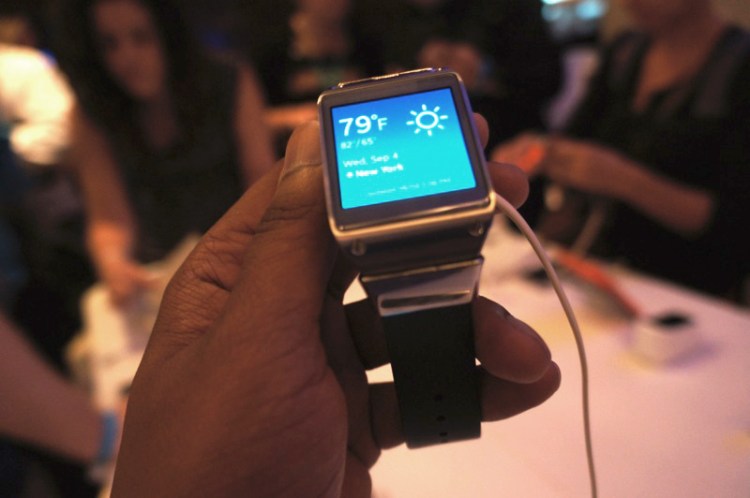Samsung’s Galaxy Gear smartwatch is here and, well, its disappointing.
While there was a lot of hope and speculation that Samsung’s entry into the smartwatch market would offer something different, unique, and Apple-shaming, that’s not what happened.
Still, it’s not all bad. One of the good things about failure is that we learn a lot from it — even if that failure isn’t our own. Here are some takeaways from what Samsung announced.
1. Launching a device early doesn’t help if the device is half-baked
Over the past few years Samsung has firmly established itself as the master of the also-ran: The company takes an idea that already exists, adds its typical flair, and sells the hell out of it.
With the Galaxy Gear, however, Samsung is turning that around by launching a device after companies like Sony and Pebble, but before its arch-nemesis Apple.
The problem is that it was almost immediately clear that that’s all Samsung was doing. Samsung wasn’t trying to usher in a new generation of smartwatches. It just wanted to launch its own device before Apple did — even if doing so meant releasing something that felt half-finished.
2. Smartwatches still have a utility problem
One of the most common criticisms lobbed at the Galaxy Gear is that the device doesn’t do much that smartphones don’t already do better. Samsung’s Galaxy Gear pitch is simple, but uninspiring: Because the device tethers to your smartphone, it lets you do things like answer phone calls without having to reach into your pocket for your phone first. It’s a gadget for your gadget.
The problem is that, at $299, the Galaxy Gear is a pretty expensive gadget, particularly if doesn’t add any new functionality and can’t stand on its own. Worse, the device only interfaces with a handful of devices, reducing its utility further.
But the problem might be larger than Samsung. So far, we’ve seen precious few smartwatch use cases that go beyond time, weather, and music playback. (I’m still waiting for Foursquare to make a single-press check-in app, for example.) Perhaps opening up the device to more developers will change that.
3. Why are we calling this a watch, anyway?
Just because a device is attached to your wrist, that doesn’t make it a watch.
In fact, from what I can tell, the only trait that the Galaxy Gear shares with my current watch is that both can display the time. So why call the Galaxy Gear a smartwatch at all?
This is an important question because once you start thinking about devices like the Galaxy Gear as “watches,” you expose them to all the expectations we already have of that form factor — durability, customization, near-perpetual battery life, etc.
A good example of a device that avoids the watch comparison despite being worn on the wrist is the Nike+ FuelBand, which Nike advertises as an “activity tracker.” Rather than draw from the history of the watch, Samsung had a chance to claim an entirely new product category with the Galaxy Gear. It didn’t do that, and instead vacillates between calling the Galaxy Gear a “wearable,” a “companion device.” An iPod moment this was not.
4. With wearables, fashion counts
While we often think of wearable devices as gadgets, it’s clear that the most successful ones will also be those that look the nicest. Similar to smartphones (or cars or sunglasses), smartwatches will be one part function, two parts fashion. This means that companies have to spend as much time thinking about the aesthetics of the devices as they do about their underlying technology. While the Galaxy Gear doesn’t look quite as bad as something like this, it’s certainly no fashion statement in its current form.
5. Will Samsung ever solve the smartwatch’s battery problem?
If you’re looking for proof that the Gear still isn’t ready for prime time, just take a look at its battery life. Samsung estimates that the device will last for roughly 24 hours on a single charge, but early first impressions suggest that real-world use will kill the device in half that time. For a device meant to be worn on the wrist all day, that’s almost a deal-breaker.
But that problem isn’t exclusive to the device’s battery life. Generally, the Gear’s underlying tech isn’t small enough, powerful enough, or cheap enough for the device to be compelling in its current form. That’s not criticism of the smartwatch form factor overall — just of where they stand today.
Your move, Apple.



